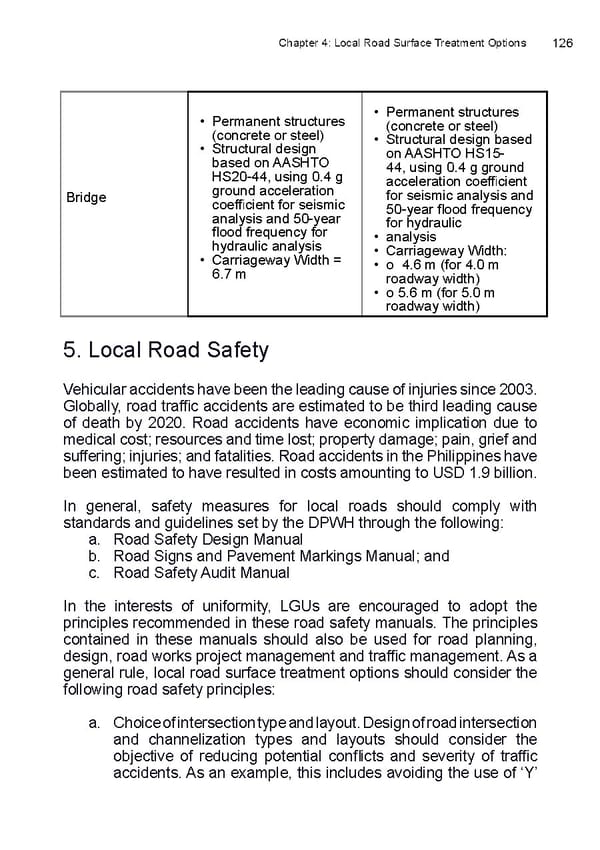Chapter 4: Local Road Surface Treatment Options 126 • Permanent structures • Permanent structures (concrete or steel) (concrete or steel) • Structural design • Structural design based based on AASHTO on AASHTO HS15- HS20-44, using 0.4 g 44, using 0.4 g ground ground acceleration acceleration coeiffcient Bridge coeiffcient for seismic for seismic analysis and analysis and 50-year 50-year lfood frequency lfood frequency for for hydraulic hydraulic analysis • analysis • Carriageway Width = • Carriageway Width: 6.7 m • o 4.6 m (for 4.0 m roadway width) • o 5.6 m (for 5.0 m roadway width) 5. Local Road Safety Vehicular accidents have been the leading cause of injuries since 2003. Globally, road traiffc accidents are estimated to be third leading cause of death by 2020. Road accidents have economic implication due to medical cost; resources and time lost; property damage; pain, grief and suffering; injuries; and fatalities. Road accidents in the Philippines have been estimated to have resulted in costs amounting to USD 1.9 billion. In general, safety measures for local roads should comply with standards and guidelines set by the DPWH through the following: a. Road Safety Design Manual b. Road Signs and Pavement Markings Manual; and c. Road Safety Audit Manual In the interests of uniformity, LGUs are encouraged to adopt the principles recommended in these road safety manuals. The principles contained in these manuals should also be used for road planning, design, road works project management and traiffc management. As a general rule, local road surface treatment options should consider the following road safety principles: a. Choice of intersection type and layout. Design of road intersection and channelization types and layouts should consider the objective of reducing potential conlficts and severity of traiffc accidents. As an example, this includes avoiding the use of ‘Y’
 LRM Manual CMGP Page 125 Page 127
LRM Manual CMGP Page 125 Page 127